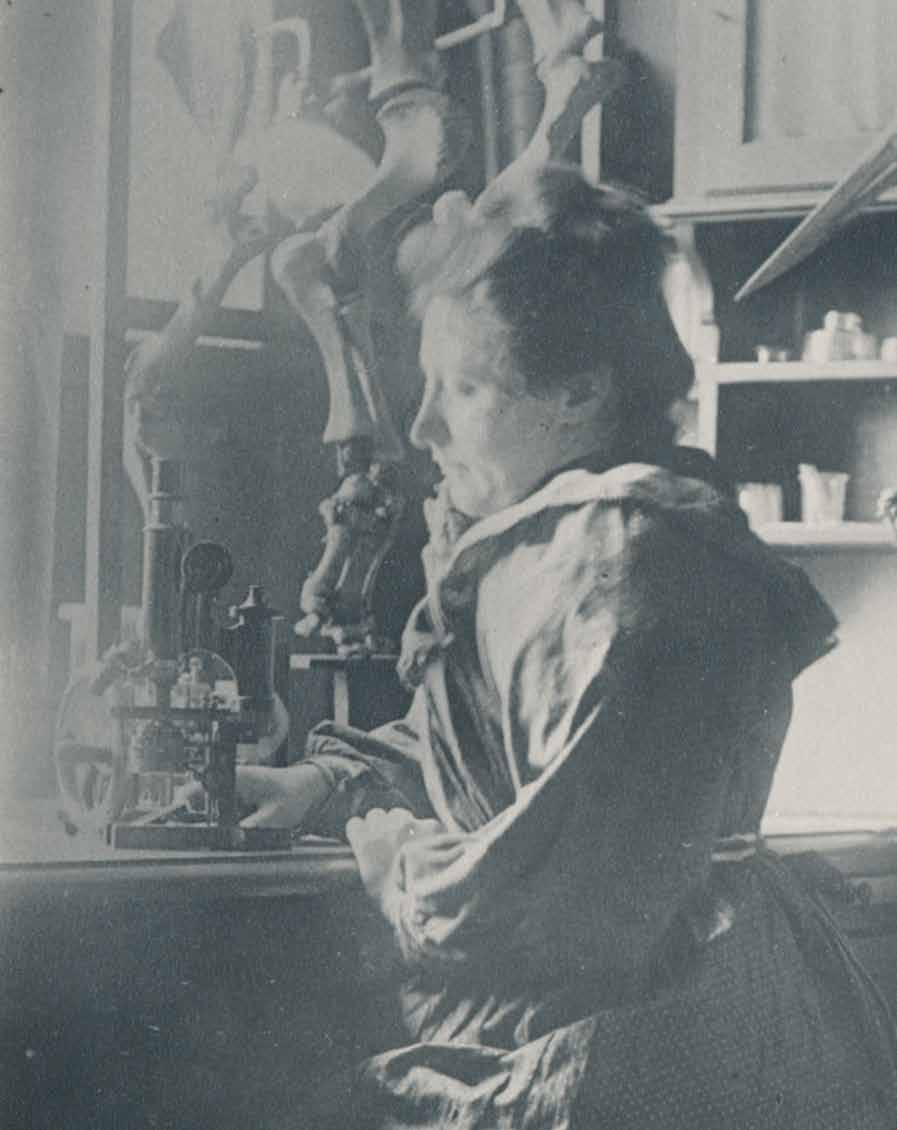#HerHistoryofScience, From Far Away Stars to The Core of Our Cells
In 2016, the United Nations established 11 February as the International Day of Women and Girls in Science. The goal is to highlight and recognize the key role that women play in the scientific and technological community. To mark this day, public and private organizations and institutions contribute their efforts to give visibility to women working in the scientific field. To this end, NeurotechEU’s partner university, Miguel Hernández University of Elche (UMH), is inaugurating the traveling exhibition #HerHistoryofScience. Featuring up to 30 panels, the exhibition showcases and celebrates 30 influential women in science—whether or not they had formal scientific training.
Some of the women highlighted are Ida H. Hyde (USA, 1857–1945), a pioneer in cellular recording; Abbie Lathrop (USA, 1868–1918), a pioneer in rodent-based animal model research; and Agnès Gruart i Massó (Spain, b. 1962), an expert in the physiology of memory and learning.
Ida Henrietta Hyde
 At a time when women were not allowed to study, Hyde took on the family role of eldest sister, caregiver, worker, and provider. However, after years of restrictions and interruptions in her education, she became the third woman to earn a doctorate from Heidelberg (1896) and the first in experimental sciences.
At a time when women were not allowed to study, Hyde took on the family role of eldest sister, caregiver, worker, and provider. However, after years of restrictions and interruptions in her education, she became the third woman to earn a doctorate from Heidelberg (1896) and the first in experimental sciences.
Hyde was the first to design a microelectrode for stimulating and recording the electrical activity of individual cells. She studied how the heart and muscles respond to electrical and chemical stimuli, contributing to a better understanding of cellular communication and biological system functions.
Abbie Lathrop
 Throughout history, women in science have been systematically overlooked, and Abbie Lathrop is a prime example of how men have often received credit for their discoveries. Lathrop and Leo Loeb collaborated on research linking hormones to cancer, yet Loeb received the recognition. Similarly, Clarence Cook Little was credited with laying the foundations for experimentation with hybrid mice and even founded the Jackson Laboratory, which still sells some genetic lines originally bred on Lathrop’s mouse farm.
Throughout history, women in science have been systematically overlooked, and Abbie Lathrop is a prime example of how men have often received credit for their discoveries. Lathrop and Leo Loeb collaborated on research linking hormones to cancer, yet Loeb received the recognition. Similarly, Clarence Cook Little was credited with laying the foundations for experimentation with hybrid mice and even founded the Jackson Laboratory, which still sells some genetic lines originally bred on Lathrop’s mouse farm.
Known as the "mother of the mice," Lathrop identified and enhanced the traits that made these rodents valuable for research. Thanks to the genetic lines and families of mice she developed, fewer specimens are required in experiments today.
Agnès Gruart i Massó
Neuroscientist Agnès Gruart co-founded the Association of Women Researchers and Technologists in 2001 to fight for equal opportunities for women in science. Her research focuses on how memory is formed. In 2006, she demonstrated how connections between hippocampal cells change as new concepts or topics are learned—blocking these changes prevents learning.

The #HerHistoryofScience exhibition is part of the BEATRICS Project, which aims to eliminate gender stereotypes in science from the classroom. It is supported by the Spanish Foundation for Science and Technology – Ministry of Science and Innovation and is co-financed by the European University of Brain and Technology.

